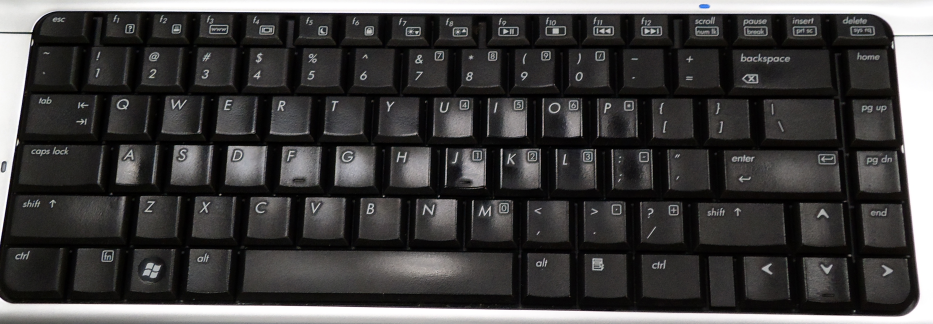I’ve decided to change my life. Substantially. I’ve decided to learn the Dvorak keyboard layout.
No, if you’re thinking about black and white keys now, you’re quite wrong there. I don’t mean Antonín Dvořák [ˈdvor̝aːk], I mean August Dvorak [ˈdvɔræk].
I’ve been a QWERTY touch typist for quite a few years now. My “default” layout used to be the US QWERTY with Polish characters accessible via AltGr. I’ve also been using the German QWERTZ with a dedicated ä, ö, ü and ß key quite heavily for regular text, but couldn’t get used to it as a coder or text terminal user.
The Layout
I had been planning on switching to a reasonably designed layout for a long time. Now, it seems that I finally managed to get started properly. I decided to customise the existing US Dvorak with Polish chars (often optimistically labelled a “Polish Dvorak”) by adding the option to use the four German chars via AltGr — this decision stems from my intention to maintain full compatibility with the original US Dvorak.
Modifying/extending a layout is very easy in most Linux distributions — all you have to do is edit one file (tested with KDE and Gnome under Fedora, Debian and Ubuntu): /usr/share/X11/xkb/symbols/COUNTRY_CODE) and log-in again (my version of /usr/share/X11/xkb/symbols/pl). Afterwards, you simply add/activate the modified layout in KDE’s/GNOME’s/whatever’s keyboard preferences. (Please note that it’s also possible to create a fully separate layout, but this requires manually updating the index file in order to enable the system to see it; thanks to the full US Dvorak compatibility, I found this unnecessary).
I decided to track my progress in real time by writing a series of “diary” entries with Dvorak, in the hope that somebody would be able to benefit from them.
First Steps
I began by printing out my layout. It’s important not to reorder the physical keys and not to use Dvorak labels as these render it more difficult to let go of peeking down at the keyboard while trying to touch type. Instead, you should clearly mark the U and H keys on your printed version of the layout and install it above (my recommendation) or below the display. For now, you can use this copy for navigation purposes in emergencies. However, it’s important that you remove it after a while in order to fully memorise all positions.
My first impression was very encouraging — although my typing speed was dramatic (and I really mean it — it was as low as a few seconds per LETTER), using Dvorak was incredibly comfortable, incredibly ergonomic. The main reason for this is the fact that many letters of most words don’t require your fingers to wander away from the home row. This is extremely noticeable in English and very noticeable in Polish and German (which now no longer require switching layouts and both offer the same special char distribution, particularly helpful when coding).
However, there certainly are a few drawbacks to replacing QWERTY with Dvorak. They are not inherent to any layout, but rather stem from QWERTY’s popularity — many programmes had been ergonomically optimised with this particular layout in mind. E. g.: the editor vi, relying very heavily on QWERTY’s home row, can no longer be used with full speed it its control mode without further modifications. Similarly, using the clipboard gets a little tricky — because the keys c, v and x are spread all over the right half of your keyboard. However, I’m convinced that these drawbacks can either be eliminated by training, worked around by rearranging your hotkeys or neutralised by the boost in handling ergonomy and speed.
That’s it for now, I’ll keep you updated!

2 responses to “My Dvorak Diary, p. I”
Yes!!! I’ve actually also made the jump from qwerty to Dvorak and couldn’t agree with you more! I also use Polish quite often (along with French and Esperanto keyboards) and would love to have a custom keyboard that would allow me to use all these without having to switch layouts all the time. I use a Windows machine and might start playing with building my own keyboard for it (http://msdn.microsoft.com/en-us/goglobal/bb964665). Any other ideas on resources that might help a brother out : )?
Done! I actually used the above program and it was a great success. I’ve now got an amazing Dvorak keyboard layout, complete with all the accented trappings of Esperanto (ĉ,ĝ,ĥ,ĵ,ś,ŭ), French (à,ç,é,è,ê,ë,î,ï,œ,ù), and Polish (ą,ę,ć,ł,ń,ó,ś,ź,ż)! Highly recommended step-by-step tutorial: http://ilgthegeek.livius.net/2010/05/31/editing-windows-custom-keyboard-layouts/.